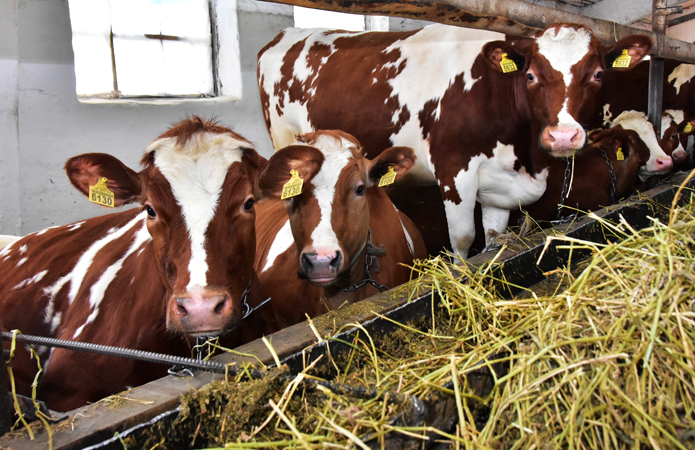Farm report, Australia: Aiming to breed the perfect cow

Queensland dairy farmer Paul Roderick is on a mission to fine-tune his breeding to produce the perfect dairy cow that is matched to his farm.
That is one of the future goals for Paul who says he has already reached the maximum number of cows his farm can carry.
Being 5th generation on his farm at Harrrisville Paul can trace his family’s history right back to 1860 when his great great great grandfather Thomas Roderick emigrated from Wales for a new life down under. Although it was a mixed farm in the early days, the sole focus has now changed to dairying and Paul runs the farm together with his wife Linda and parents David and Gwen.
id=”ctl01_lblDescription”>Silage is made to feed the cows through the winter months. Photo: Chris McCullough
Paul says: “We farm 220 hectares in Harrisville about an hour south-west of Brisbane. At the moment we have a fairly reasonable seasonal calving pattern from March to August.
“Our cows graze all year round and are split into groups. Cows calve into the fresh group which consists of a third to a half of all the cows at any one time.
“The cows move through that herd and peak their lactation there. Some of those will stay for 60 days to over 100 days until we get past peak production.
Paul keeps around 110 calves each year to have around 220 followers at any one time as they calve down at 2 years old. AI is used predominantly throughout the herd and some beef bulls are used as backup.
id=”ctl02_lblDescription”>With the intense summer heat shade is essential to keep the cows cool. Photo: Chris McCullough
Paul states: “All the heifers receive sexed semen via AI on a fixed time programme. Our cows are AI’d from June to September. The beef bulls are used as sweepers because the market for beef bobby calves is much better than for the dairy breeds.
“We are using more and more sexed semen to a point where I think in the next 2 to 3 years we will use Holstein sexed semen and beef breed males on the lower value cows. We have also started genomic testing so that will enable us to do that with more accuracy,” he says.
We have a long way to go in developing the best cow we possibly can…”
Along with the family’s labour input Paul’s farm run 3 extra full-time staff. “We produce 2.6 million litres of milk per year so we average around 450,000 litres per labour unit,” Paul adds. “The milk is sold to Lactalis as liquid milk and we receive probably a higher price on average than other regions in Australia. Our average price this year will be 67 Australian cents (£0.37) per litre.
“The cows are milked in a Gea 14 double up parlour built 14 years ago that has been updated with ACRs, milk metres and ID recognition.
“We also use an automatic drafting system which has been a great assistance for the past 10 years. This technology allows us to make very informed decisions about the cows, like when to move them from one group to the next as well as AI decisions, culling and breeding decisions.” And it’s that breeding that Paul wants to improve in the future to breed the perfect cow for his system.
Developing the perfect cow
“I think we have hit our maximum cow numbers, so for us the goal is to get the best from our system,” says Paul. “We have a long way to go in developing the best cow we possibly can and part of that is using genomic testing and sexed semen to really try and fine tune the cow that suits our system here in Queensland.
“The cow we require has to be heat tolerant, has to have good feet and legs, and a good mammary system. We are looking for longevity and trying to minimise the number of replacements we need by bringing the replacement rate down to below 30%,” said Paul.
“We also aim to grow as much feed as we can in the future. We use around 3,500 wet tonnes of corn and barley silage in a year which forms the basis of our ration and we are looking to move into some more commodities like mill run and whole cotton seed.”
Challenges
When it comes to challenges Paul lists water access and climate as his main problems. He says: “We get water out of the local dam that services our valley. However, this valley grows a lot of vegetables so we have competition for water and we are starting to see competition for land use.
“Our region is fairly coastal and dairying here is a huge challenge with our weather. We need to have shade, sprinklers and fans to keep the cows cool in the summer when they are in the holding yard.
“We normally milk twice per day but we increase that to 3 times in the spring just to see if we can take a little bit more out of the spring. With the heat and humidity in the summer it is really challenging to milk cows then,” he adds.
Write to us
Our manager will contact you soon



